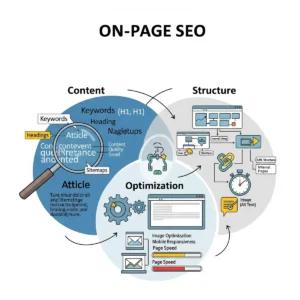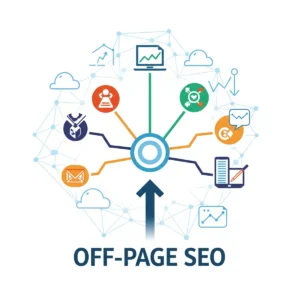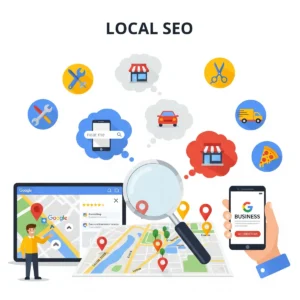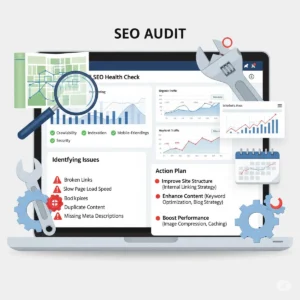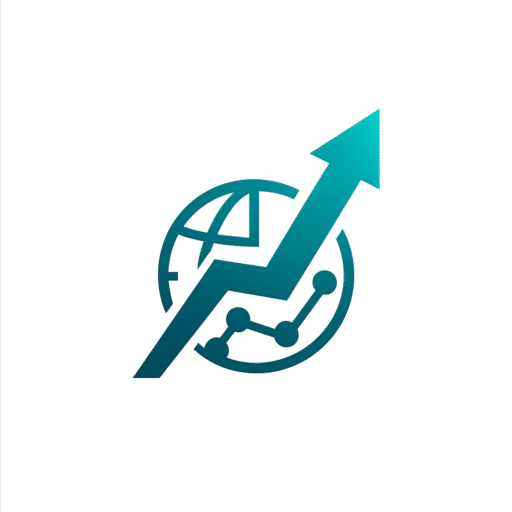Understanding the Basics of White Hat Link Building
What Is White Hat Link Building?
When I first started with white hat link building, I realized how different it felt compared to the quick-fix hacks, shady tactics, or spammy tricks floating around the web. Instead of chasing loopholes, this approach is entirely Google approved because it relies on ethical methods where backlinks are naturally earned. The focus is on creating authentic, high-value links through quality content, nurturing relationships, and ensuring relevance with the sites you collaborate with. From my own work, the best results came not from shortcuts but from consistently producing material that others wanted to reference, which built trust and authority in a way no artificial system could.

Why It Matters
From my experience, the reason backlinks matter so much is because Google treats them as one of the most important ranking factors. A high-quality backlink can boost your rankings, while low-grade ones—especially if they’re bought or faked—can hurt your site in the long run. The safest approach has always been focusing on earned links that reflect the genuine value of your content.
White Hat vs. Black Hat SEO
When I started learning SEO, I quickly saw how White Hat practices are the only safe way to build a long-term, Google-friendly strategy. Black Hat shortcuts may look tempting, but they’re risky, often short-term, and can be downright disastrous. Some people try a Gray Hat path, sitting in the middle, but it’s still dangerous because penalties can wipe out years of work. Playing the long game with white hat SEO is always smarter, even if it means you avoid fast but fragile wins.
Google’s Official View
I often remind myself to check Google Search Central because their guidelines are clear: they discourage any manipulative link schemes and instead reward content that earns links naturally. From what I’ve seen, the strongest growth comes when you focus on usefulness and originality—that’s what makes people share and cite your work without asking.
Ben A Roo’s Approach to White Hat SEO
The Story Behind Ben A Roo
- Ben is often seen as an SEO wizard, yet he was completely self-taught as a marketer.
- His passion for doing things ethically and effectively shaped his career.
- He always focused on the long game, building real authority instead of chasing shortcuts.
His SEO Philosophy
- Ben’s motto was simple: every backlink should be something your grandma would be proud you build.
- He believed the process had to center around valuable content in a clear niche.
- For him, authority came through strategic outreach, never through nonsense methods.
Success That Speaks Volumes
- Ben’s strategies helped countless small businesses and startups rank on page one.
- His case studies have been featured across trusted platforms like Ahrefs, Moz, and BuzzSumo.

White Hat Link Building vs Black Hat SEO Comparison Chart
- A white hat link building approach vs black hat SEO in a comparison chart clearly shows why sustainable growth depends on playing by the rules.
Ben A Roo’s Top White Hat Link Building Strategies
Guest Posting on Authoritative Blogs
I’ve found guest posting to be one of the most reliable ways to earn editorial links. The key is targeting niche-relevant, high-DR sites where your contribution actually adds value instead of just filling space.
How to Find Opportunities
When I look for blogs, I rely on Google search operators like “write for us” + niche or “contribute” + keyword. Pairing this with tools such as Ahrefs or BuzzSumo helps me scout ideal link prospects without wasting time.
Ben’s Pitching Formula
What worked for me (and what Ben always emphasized) is starting with a genuine compliment to the editor, then making a clear offer. I pitch a unique topic in a short brief, showing how my blog post will contribute something fresh, actionable, and full of value. I always end by asking if they’re interested in publishing it.
Broken Link Building the Smart Way
Another favorite strategy is fixing web broken links and replacing them with my clients’ content. It’s a win-win since site owners appreciate having outdated pages updated.
Tools He Uses
To make this smooth,
- Ahrefs,
- Screaming Frog
- SEO Spiderand Check My Links (a Chrome extension) are my go-to tools for spotting opportunities quickly.
Resource Page Link Building
I also target .edu and .org resource pages that curate genuinely helpful links. A solid piece of content often gets added if it aligns with the purpose of the page.
Skyscraper Technique Upgraded
For tougher niches, the upgraded Skyscraper Technique works. I take high-performing content and create something better with visuals, case studies, tighter structure, smoother readability, and more original insights. This almost always wins more attention.
The Core Principles of White Hat Link Building
Focus on Quality Over Quantity
- In white hat link building, the real difference comes from focusing on quality rather than chasing endless numbers of links.
- Ben A Roo always highlighted that one high-quality backlink from an authoritative and relevant site outweighs dozens of weak ones.
- These kinds of endorsements send strong signals to search engines, showing that your content is trustworthy and worth ranking.
- Making quality the cornerstone of your approach builds credibility and delivers long-term benefits, unlike spammy tactics that fade quickly.
- I’ve personally seen websites grow steadily just by securing a few meaningful backlinks, proving that consistency beats quantity.
Relevance Matters
- Backlinks only create value if they come from websites that are closely tied to your niche or industry.
- A link from a digital marketing blog to an SEO article carries far more weight than one from an unrelated cooking site.
- In my projects, I noticed that marketing-related sites drive stronger SEO gains compared to random, unrelated domains.
- SEO rewards links that are impactful because they make sense contextually and align with the website’s focus.
- Always prioritize relevance—it not only improves rankings but also ensures traffic from the right audience.
User-Centric Approach
- The foundation of white hat link building is creating value for users, not just for algorithms.
- Understanding your audience and their needs is the first step—your content should be informative, practical, and easy to apply.
- I’ve found that adding engaging visuals like infographics or charts makes articles much more link-worthy.
- Building interactive tools (like calculators, checklists, or templates) often earns organic mentions and natural links without outreach.
- A user-first strategy ensures that every backlink is authentic because people link to content they truly find useful and shareable.
Tools of the Trade
- Ben built his entire SEO workflow around a carefully chosen set of tools that streamlined his process and saved time.
- For backlink analysis, Ahrefs was his go-to, helping him spot gaps, track competitors, and uncover new opportunities.
- He relied on Content Explorer inside Ahrefs to find trending content and identify pages worth targeting for links.
- When it came to outreach, Hunter.io made it easy to find verified emails of editors and site owners.
- To strengthen his outreach campaigns, Ben often used BuzzSumo for topic research and to connect with the right influencer voices in his niche.
- By combining these tools, he created a repeatable system where every step—from research to email outreach—was precise and effective.
Content is King
- Valuable content is the foundation of every strong link-building strategy, and Ben always treated it as the first priority.
- He created detailed guides, engaging infographics, and shared original research that others naturally wanted to cite.
- Publishing case studies in different formats turned his work into powerful link magnets, attracting attention without heavy outreach.
- By focusing on depth and usefulness, Ben ensured his work kept getting referencing from authoritative sites over time.
How to Measure Link Building Success
Ben’s Favorite KPIs
- Referring domains were at the top of Ben’s list because a diverse set of sites linking to you carries more weight than just the number of backlinks.
- He closely monitored organic traffic increases to see whether his strategies were truly bringing in visitors.
- Keyword improvements showed him which content pieces were gaining traction in search results.
- To measure strength, he relied on authority score metrics such as Moz DA and Ahrefs DR, which gave him a clear picture of a site’s trustworthiness.
Why It Matters
- By consistently tracking these metrics, Ben could refine his campaigns and double down on what worked.
- It also helped him prove the ROI of link-building to clients, showing clear evidence that his approach delivered measurable results.
Avoid These Link Building Mistakes
- One of the biggest errors I’ve seen is doing mass outreach without proper personalization. Sending the same email to dozens of editors or bloggers makes your request look generic, and most will ignore or even flag it. Ben always reminded me that thoughtful, personalized outreach builds trust and actually gets responses.
- Another mistake is relying on low-quality guest post farms. These sites exist only to sell posts and have no real audience or credibility. While it might feel like you’re building links, in reality, you’re just associating your site with spammy networks that can do more harm than good.
- Ignoring topical relevance is also a serious pitfall. A link from an unrelated domain may pass little to no value, and Google is smart enough to detect when your backlinks don’t align with your niche. The goal should always be to send users to sites that genuinely connect with your subject matter.
- I’ve learned the hard way that chasing numbers or copying what others do is never sustainable. Real authority comes from contextually relevant, authentic placements, not shortcuts.
Networking Is the Real Secret
- For Ben, the real success behind link-building wasn’t just tools or tactics—it was the relationships he built over time.
- Strong connections often turned into natural links, because people trusted his work and wanted to collaborate with him.
Where He Connects
- He spent a lot of time on Twitter (X) engaging in his niche conversations and building credibility.
- Joining Slack groups gave him direct access to professionals sharing opportunities and advice.
- Communities like Indie Hackers helped him network with founders who needed SEO support.
- He also appeared on podcasts and attended digital summits, where genuine connections later translated into backlinks and partnerships.
Advice from Ben A Roo for Beginners
- Ben always advises beginners to focus on a strategy that prioritizes relevance and quality over quick wins.
- He recommends mastering one technique at a time and using a spreadsheet to track every outreach effort, making it easier to measure what works.
- Patience is key—he stresses that results don’t appear overnight, and consistent work over time leads to a snowball effect where links, traffic, and authority grow naturally.
What’s Next for White Hat SEO?
Google’s E-E-A-T Update
- Google now places even more emphasis on quality standards, focusing on experience, expertise, authoritativeness, and trustworthiness.
- This impacts guest posting, outreach, and email campaigns, making white hat link building and content creation with strong keywords more important than ever.
- Following these principles ensures that links come from credible sources and that your content meets Google’s updated expectations for reliability and value.

AI + Human Touch
- Combining AI with a human touch can supercharge content creation. I often brainstorm ideas with AI, then refine through editing to maintain quality and authenticity.
- This balance helps produce content that attracts links naturally while staying aligned with both user needs and Google’s E-E-A-T standards.
FAQs About white hat link building ben a roo
What is a white hat link building?
White hat link building is an ethical SEO practice where backlinks are earned naturally through high-quality content, relationships, and relevant placements instead of using spammy tricks or shortcuts.
What is a whitehat approach to building backlinks?
A whitehat approach focuses on authentic, Google-approved methods, creating trustworthy links via valuable content, niche-relevant sites, and genuine outreach rather than using shady tactics.
Is link building illegal?
No, link building is not illegal. However, using manipulative, spammy, or faked backlinks can violate Google’s guidelines and lead to penalties, so sticking to white hat methods is essential.
How to build 100 backlinks in 30 days or less?
While numbers can vary, the key is consistent white hat link building: creating valuable content, performing targeted outreach, guest posting on high-authority sites, and leveraging relevant platforms to earn backlinks.
How to earn backlinks?
You earn backlinks by producing high-quality, informative content, sharing case studies, using infographics or tools, engaging in guest posting, and building genuine relationships in your niche.
How many backlinks does it take to rank a website?
There’s no fixed number. What matters is the quality, relevance, and authority of backlinks. A few high-quality links from authoritative sites often outperform dozens of low-quality ones.

